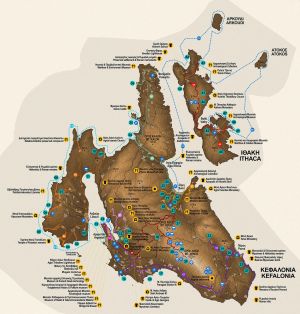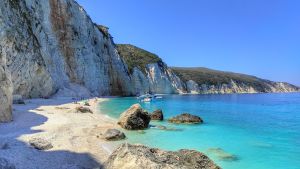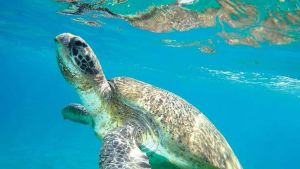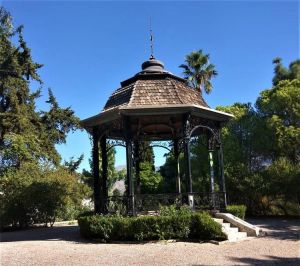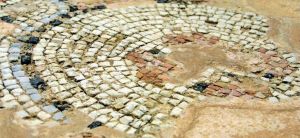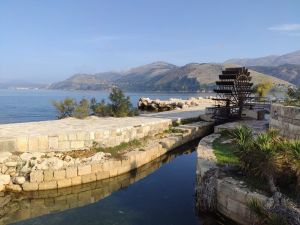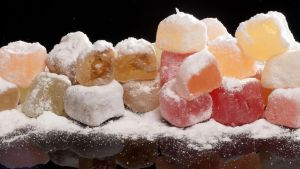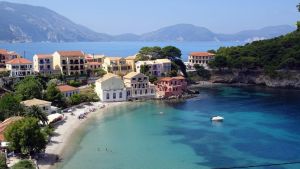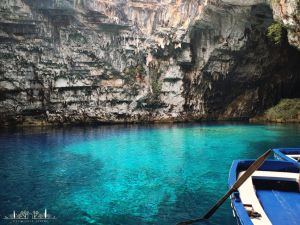Displaying items by tag: kefalonia
DISCOVERING THE GEOPARK OF KEFALONIA AND ITHACA
Do you know what a geopark is? It is an area with a geological, ecological, archaeological and cultural heritage of international importance for its scientific quality, rarity, aesthetics and educational value. The recognition of these local resources and the establishment of a geopark have the primary purpose of protecting this unique environment and promoting it to educate visitors of all ages, developing a conscious and sustainable ecological tourism. In Greece, nine sites of extraordinary beauty and geological variability have already been included in the global network of UNESCO geoparks and one of them is located right in Kefalonia and Ithaca.
KEFALONIA FOOD AND WINE TOUR
In recent years, food and wine tourism has gained a place of honour among the preferences of travellers from all over the world. This phenomenon, constantly growing, is fuelled by the growing awareness that food is a significant expression of the cultural identity of a place. Food and wine tourists are looking for authentic experiences, eager to taste typical dishes prepared with local ingredients and to discover the secrets of recipes handed down from generation to generation to savour not only the scents and aromas of a place, but also its culture. This sector is increasingly flourishing in Kefalonia too. Excellent raw materials, a fascinating mix of different cultures (primarily Venetian and Ottoman) and the blend of ancient traditional recipes and modern culinary concepts have given life to a wide and worth-trying food and wine panorama on the island. Among the main ingredients we find grilled or baked meat, goat cheese, garlic, cinnamon, tomato sauce, aromatic herbs such as oregano, marjoram, mint and fennel, honey and filo pastry. Are you ready to discover Kefalonia at the table? Here are our suggestions for a food and wine tour of the island to do independently or with a local guide:
SNAPSHOTS FROM KEFALONIA: THE BEST 10 PHOTO STOPS
Before setting foot in Greece for the first time, I imagined the Ionian Islands just like in the novels by Durrell and De Bernières that I loved so much: a small world on the edge of reality, with very hot summer days, immense olive groves and a sea as blue as the sky. I feared that upon arrival in Kefalonia my imaginary world would mercilessly collapse but a quick look out the window upon landing was enough to reassure me. One of the largest Greek islands, Kefalonia has dream beaches, mysterious caves and hidden lakes, picturesque villages, incredible views just waiting to be photographed and maybe shared with friends and family.
LOGGERHEAD TURTLES, WITH GRACE AND SLOWNESS FROM ANTIQUITY UP TO US
They are among the largest reptiles in the world, inhabit almost all the oceans and are so ancient that they shared the planet with dinosaurs over 210 million years ago. The Caretta Caretta turtle ("loggerhead" in English for its large and muscular head) is a symbol of the Mediterranean and of Greece in particular: our coasts host 60% of the nests in the Mediterranean area and two of the most important breeding sites for the species, one in Zakynthos and the other in the western Peloponnese.
THE NAPIER PARK, A GARDEN IN THE HEART OF ARGOSTOLI
Right in the center of Argostoli there is a large iron gate that seems to lead to a secret garden. Little Napier Park sits on a rise just above the town's main square. Surrounded by stone walls in the local style, thanks to its secular trees the park offers a particularly pleasant shaded refuge during the summer heat.
ROMAN KEFALONIA, THE ARCHEOLOGICAL SITES OF FISKARDO AND SKALA
For us Italians, lucky inhabitants of a country rich in historical finds unique in the world and incredible architectural beauties, the discovery of Roman settlements during an excavation activity does not represent a rare and particularly significant event. Should you therefore visit the Fiskardo cemetery and the Roman villa of Skala during your holidays in Kefalonia? Absolutely yes! Coming across Roman finds abroad, in addition to demonstrating that we are not the first "Italians" to have fallen in love with this enchanting island, reminds us how intertwined the history of Mediterranean countries is and how much these contacts have enriched all the civilizations involved... And if you're traveling with little explorers, this break from the beach is sure to be a great adventure for them!
KATAVOTHRES, A MISTERY ON THE SEA
Did you know that Kefalonia is famous for one of the most amazing geological phenomena in the world? The "katavothres", the best known sinkholes on the island, are about two kilometers from Argostoli on the coastal road to Lassi. The sea water creeps here between the rocks, disappears, flows in underground rivers fed by rainwater and re-emerges in brackish composition on the other side of the island!
SOUVENIR, WHAT TO BUY IN KEFALONIA
Souvenir are the crowning glory of every trip. How to choose something that does not end up irretrievably in a drawer as soon as we return home but, on the contrary, continues over time to make us feel a little on vacation or even entice those who have not been there to leave? What souvenirs did you buy in particular in Kefalonia? Tell us the most original or your favorite, let's prepare together a wish list for next summer!
KEFALONIA, WHAT TO SEE IN 7 DAYS ON THE ISLAND?
How many days does it take to visit Kefalonia? You may not like the answer: many, many more than you are likely to have available. Not only for the size of the island and therefore the large number of beaches, villages and postcard views not to be missed, but also because a holiday in Kefalonia can become a state of mind: the island should be savored slowly, between a coffee and a souvlaki, because its relaxing atmosphere is even better than its exceptional beaches.
KEFALONIA, A 4 HOURS TOUR IN THE CENTER OF THE ISLAND (MONASTERY OF SAINT GERASIMOS, LAKE OF MELISSANI, CAVES OF DROGARATI, AGIA EFIMIA, MYRTOS BEACH)
Donkeys trudging along steep cobblestone streets, blue and white houses, bougainvillea pergolas, elderly people with sun-baked skin playing tavli (backgammon) sitting outside a tavern ... in the collective imagination, the Greek islands are all the same. Kefalonia is the best place to realize how different this tourist representation is from reality. A few days will not be enough to visit this corner of paradise! Beaches washed by turquoise waters, pine forests and aromatic plants, picturesque fishing villages in pastel colours overlooking the sea… The largest of the Ionian islands offers a lot to those who want a holiday in contact with unspoiled nature but also to contemporary history enthusiasts.

